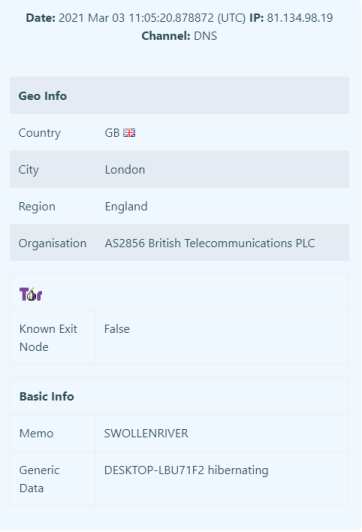tl;dr
We prototyped a Windows Service Canary in order to target parts of the ransomware kill chain to minimize impact and overall success of operations. Multiple instances are installed masquerading as common Windows services that are targeted by threat actors prior to encryption. If multiple instances of these services are stopped then a Canary token is triggered and the host hibernated. In doing so we are able to alert, minimize the impact and give the best possible chance of recovery.
Background – Ryuk’s TTPs
Ryuk is a well known and active ransomware first discovered in 2018 and covered by CrowdStrike (January 2019), Carbon Black Threat Analysis Unit (February 2020) and Abdallah Elshinbary (May 2020). These write-ups all detail certain trade-craft used in Ryuk deployments around service and process termination prior to encryption beginning via kill.bat.
The list of Windows services and processes killed via kill.bat is extensive with Abdallah Elshinbary providing a comprehensive list of both.
Thesis
Given that a number of services are stopped prior to encryption there exists the opportunity not only for detection but also impact minimization.
The thesis is we can deploy a number of Canary Windows Services which keep track of how many are running. If these Windows services are stopped (via net stop, sc or similar) not during a host shutdown we are then able to respond automatically. This automated response involves firstly triggering a canary token and then hibernating the host.
By doing so we:
- Alert the defensive function with a high-signal alert.
- Minimize the impact via likelihood of successful encryption.
- Give the best chance of recovery.
Prototype
The implementation follows what we describe. It is installed in place of commonly targeted services and there is a shared counter for the number of running instances which gets decremented when stopped via sc.exe or net.exe. When the total number of running instances drops below two we then fire a DNS canary token and then hibernate the host.
Canary Token Use
We’ve used an extensibility feature of DNS canary tokens to encode arbitrary data effectively using them as Alerting as a Service. Specifically the host name which is hibernating is encoded into the DNS canary token. This means we know not only did it fire but also which host. This obviously becomes useful when running on a large number of hosts.

Real World Efficacy
In short it is today unknown, but we hope others will take the concept, experiment and share real-world efficacy data back with the community. Some initial response has been a commoditized product which does this will likely not work for any significant period of time, which seems rational:
in a conversation today with The Record, MalwareHunterTeam, a security researcher who has tracked and analyzed hundreds of ransomware strains across the years, said that ransomware gangs are also likely to deploy countermeasures for Killed Process Canary if the tool ever becomes a hindrance to their operations.
However the real answer is we don’t know how effective it will or won’t be today. What is clear however is there is opportunity to make the operating environment for threat actors significantly more hostile than it is today.
The Code
https://github.com/nccgroup/KilledProcessCanary
Thanks and Feedback etc.
Thanks to Harry for the discussions which led to the prototype.
Feedback welcome via pull requests, e-mail (ollie dot whitehouse at nccgroup dot com) or @ollieatnccgroup on Twitter.
